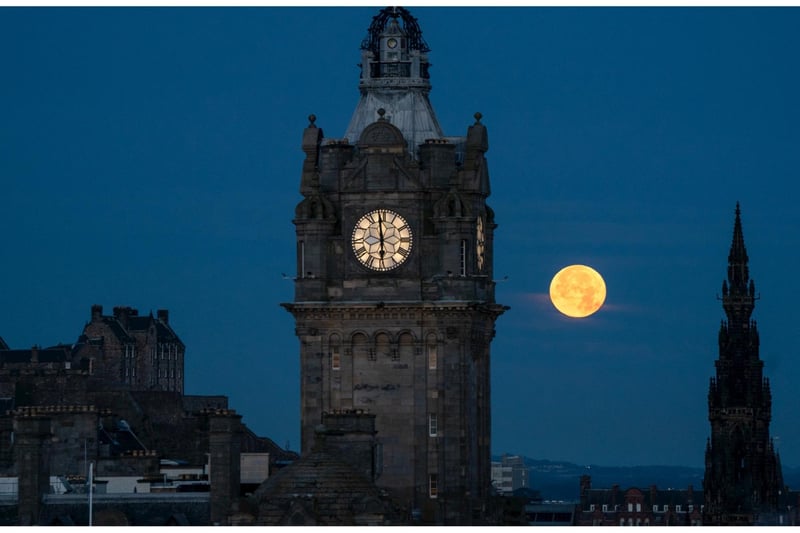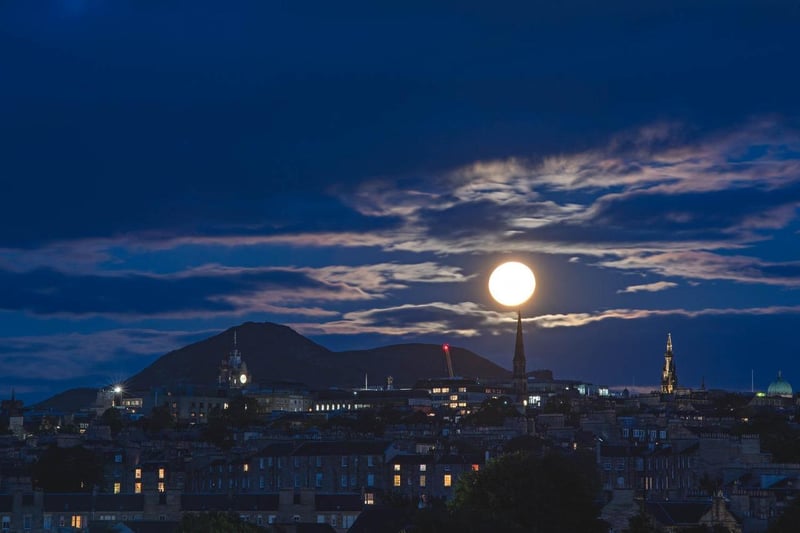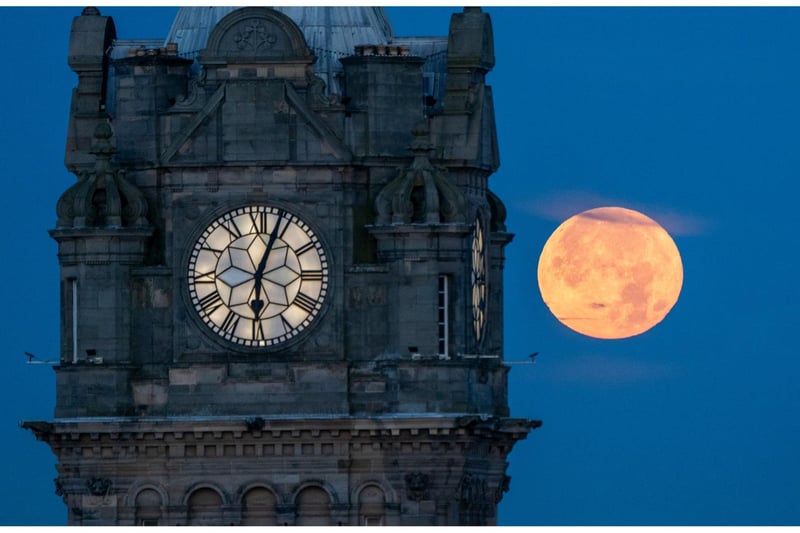Appearing larger than usual, it was expected to rise at around 8pm (BST) on Thursday to then set at around 6am (BST) the following day, but it shone on Wednesday night.
The term 'Blue Moon' actually doesn't have anything to do with its colour. When we get two full moons in one calendar month, or four in one season, these are called blue moons.
As NASA previously explained: "According to modern folklore, a Blue Moon is the second full Moon in a calendar month.
“Usually months have only one full moon, but occasionally a second one sneaks in.”
Most months only have one full moon, so a second is quite a rare event, occurring approximately once every two or three years.
The best time to catch a glimpse is when local conditions are best suited to a clear sky – low cloud cover, favourable weather, and no obstructions on the horizon – such as buildings or trees.
Take a look through our photo gallery to see the rare blue supermoon which dazzled stargazers across Edinburgh and beyond, treating stargazers to a phenomenon that will only happen once this year.

1. Balmoral Clock and the Scott Monument
The blue supermoon sets between the Balmoral Clock and the Scott Monument in Edinburgh. Photo: PA

2. Over Edinburgh
Richard Scott sent in this stunning image of the blue supermoon over Edinburgh. Photo: Richard Scott Photo: Richard Scott


4. Balmoral Clock
The blue supermoon sets behind the Balmoral Clock in Edinburgh. Photo: PA
